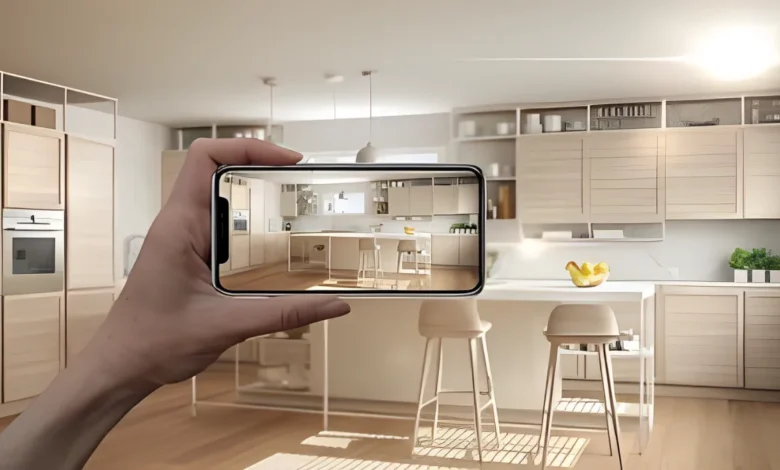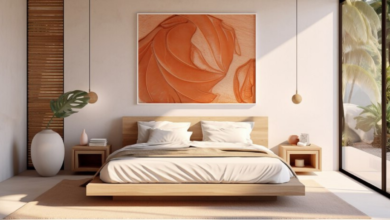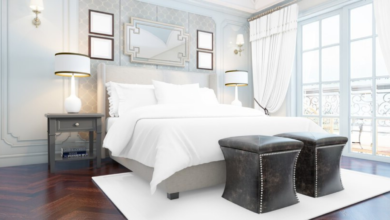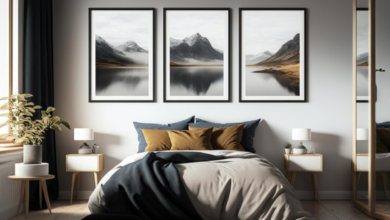Virtual Room Designer: Transform Your Space Digitally

Introduction to Virtual Room Designing
In today’s digital age, traditional room design methods are no longer the only option for those looking to transform their space. Virtual room design offers a revolutionary approach to interior design, allowing individuals to visualize and customize their rooms with ease. In this blog post, we will discuss the concept of virtual room design, its evolution, and why it matters in the world of interior design.
What is virtual room design?
Virtual room design refers to the process of creating and visualizing room designs digitally. It allows users to experiment with different furniture, colors, and décor elements without physically implementing them. By utilizing user-friendly virtual room designer tools, individuals can save time, effort, and resources.
Understanding the concept
At its core, virtual room design is about creating a virtual representation of a physical space. It involves using software and digital tools to create 2D or 3D visualizations of the room, making it easier to experiment with various design choices.
How does it differ from traditional room design methods?
Traditional room design methods often involve physically rearranging furniture, repainting walls, or installing new fixtures. In contrast, virtual room design offers a more efficient and cost-effective alternative. It allows individuals to experiment with design choices virtually before making any physical changes in their space.
Benefits of using virtual room designers
Using virtual room designers provides various benefits. Firstly, it helps users save time and effort by allowing them to visualize and experiment with different design options quickly. Secondly, it reduces the risk of design mistakes and disappointments by allowing users to test drive their choices before implementation. Lastly, virtual room designers offer enhanced customization and personalization options, allowing users to create spaces that truly reflect their style and preferences.
The Evolution of Virtual Room Designing
Virtual room design has come a long way since its inception. Historically, it first emerged as basic design software in the early 2000s. However, with advancements in technology, it has transformed into a powerful tool that has revolutionized the interior design industry.
Historical context and development
The development of virtual room design can be traced back to the introduction of basic design software such as AutoCAD in the 1980s. These early tools allowed designers to create digital representations of rooms and experiment with different layouts. Over time, as technology advanced, virtual room design software became more accessible and user-friendly.
Advancements in technology that enabled virtual room design
Advancements in computer processing power, graphics capabilities, and user interfaces have played a significant role in enabling virtual room design. Today, powerful software and tools allow users to create detailed and realistic 3D visualizations of their rooms. They can explore different color schemes, furniture arrangements, and even experiment with lighting conditions.
Impact on the interior design industry
The rise of virtual room design has had a profound impact on the interior design industry. It has democratized the design process, allowing individuals to take charge of their spaces. Additionally, virtual room design has opened up new avenues for collaboration between designers, clients, and contractors. It fosters effective communication, streamlines decision-making processes, and ultimately leads to better client satisfaction.
Why virtual room design matters
Virtual room design is not just a passing trend—it is here to stay. It offers numerous advantages that make it a crucial tool in the interior design landscape.
Creating visually appealing and functional spaces
One of the primary objectives of interior design is to create visually appealing and functional spaces. With virtual room design, designers and homeowners can achieve this goal more effectively. By experimenting with different elements virtually, they can find the perfect balance between aesthetics and functionality.
Cost-effectiveness and time efficiency
Traditional room design methods often consume a significant amount of time and resources. Virtual room design offers a cost-effective and time-efficient alternative. Users can save money by avoiding costly errors in purchasing and installation. Additionally, they can speed up the design process by quickly visualizing and finalizing their design choices.
Enhanced customization and personalization
Virtual room design provides unmatched customization and personalization options. Users can experiment with endless design possibilities, such as different color schemes, furniture arrangements, and textures. They can explore their creativity without any limitations, leading to spaces that truly reflect their individuality.
How Virtual Room Designers Work
Now that we understand the concept and importance of virtual room design, let’s dive into how virtual room designers work and navigate through the design process.
Exploring Virtual Room Designer Tools
Virtual room designer tools are designed to be user-friendly and accessible. They offer intuitive interfaces and a wide range of features to enhance the design experience.
User-friendly interfaces and features
Virtual room designer tools typically have user-friendly interfaces that allow users to easily navigate through the various design options. They provide drag-and-drop functionality, clickable elements, and visual cues to streamline the design process.
Available platforms and software options
Virtual room design software is available in various forms, including web-based platforms, desktop applications, and mobile apps. Popular platforms such as HomeByMe, Roomstyler, and Planner 5D offer comprehensive tools and resources for designing rooms virtually.
Getting started with virtual room designers
Getting started with virtual room designers is relatively simple. Users need to create an account on the chosen platform or download the software. They can then begin by inputting the room measurements and requirements, which will serve as the foundation for the design process.
Step-by-Step Process of Virtual Room Designing
Virtual room design follows a step-by-step process, ensuring all aspects of the design are considered and implemented effectively.
Collecting room measurements and requirements
The first step in virtual room design involves collecting accurate room measurements and understanding the requirements. This could include determining the room size, ceiling height, windows, and doors.
Choosing furniture, colors, and décor elements
Once the room measurements are in place, users can start exploring furniture, colors, and décor elements virtually. They can choose from pre-existing catalogs or upload their own furniture and décor items to create a truly personalized space.
Rendering and visualizing the designed space
After selecting the desired elements, virtual room designers enable users to render and visualize the designed space in high-quality 3D graphics. This step allows users to see how different design choices come together and make any necessary adjustments.
Realistic Virtual Room Visualization
Virtual room designers leverage advanced rendering techniques and lighting simulations to create realistic visualizations of the designed space.
High-quality 3D graphics and rendering techniques
Virtual room designers use high-quality 3D graphics and rendering techniques to create lifelike representations of rooms. This ensures that users get an accurate idea of how the final design will look.
Incorporating different lighting conditions
Lighting plays a crucial role in interior design. Virtual room designers allow users to experiment with different lighting conditions, such as natural light, artificial light, or a combination of both. This helps users understand how lighting can impact the overall ambiance and visual appeal of the space.
Exploring virtual room walkthroughs
Some virtual room designers offer the option to explore virtual room walkthroughs. This feature allows users to virtually walk through their designed space, getting a sense of how it feels from different angles and perspectives.
Advantages of Virtual Room Designing
Virtual room design offers several advantages that make it a valuable tool in the world of interior design.
Reducing design mistakes and disappointments
Virtual room design allows users to test drive their design choices before implementing them physically. This reduces the risk of costly design mistakes and disappointments.
Test driving design choices before implementation.
The ability to visualize and interact with design choices virtually ensures that users can make informed decisions. They can experiment with different options and identify any potential drawbacks or shortcomings before making any physical changes to their space.
Avoiding costly errors in purchasing and installation
Implementing design choices without proper planning can often lead to costly errors during the purchasing and installation stages. Virtual room design helps avoid these mistakes by allowing users to finalize their choices virtually.
Minimizing design regret and maximizing satisfaction
By using virtual room designers, users gain confidence in their design choices, minimizing the chances of regretting their decisions. This ultimately leads to increased satisfaction with the final outcome.
Collaboration and communication enhancements
Virtual room design enhances collaboration and communication between various stakeholders involved in the design process.
Effective communication with clients, contractors, and designers
Virtual room designers facilitate effective communication between clients, contractors, and designers. It allows for better understanding and visualization of design concepts, making it easier to convey ideas and preferences.
Streamlining decision-making processes
Collaboration on virtual room design platforms streamlines the decision-making process. Stakeholders can collectively evaluate design options, provide feedback, and make quicker decisions, leading to more efficient progress.
Achieving better client satisfaction through virtual collaboration
Virtual collaboration enables designers to work closely with clients, ensuring their needs and expectations are met. It allows for real-time adjustments and improvements, resulting in higher client satisfaction.
Experimenting with Endless Design Possibilities
Virtual room design opens up a world of endless possibilities, empowering users to experiment with various design elements.
Exploring various color schemes and themes
Virtual room designers enable users to explore limitless color schemes and themes. They can experiment with bold colors, subtle hues, and various combinations to find the perfect palette for their space.
Trying out different furniture arrangements
Rearranging furniture physically can be a cumbersome task. With virtual room design, users can easily try out different furniture arrangements at the click of a button. This helps them find the most functional and aesthetically pleasing layout.
Experimenting with textures, materials, and finishes
Virtual room designers allow users to experiment with different textures, materials, and finishes. This enables them to get a sense of how different surfaces and materials can impact the overall look and feel of the space.
Virtual Room Design: Changing the Interior Design Landscape
The rise of virtual room design has led to significant changes in the interior design industry, impacting traditional practices and opening up new opportunities.
Impact on Traditional Interior Design Practices
Virtual room design has seamlessly integrated into existing workflows, transforming the way designers approach their craft.
Integrating virtual room designers into existing workflows
Designers have incorporated virtual room designers into their existing processes, using them as valuable tools to enhance their design capabilities. This integration has streamlined the design process and improved overall efficiency.
Shift towards more client-focused design approaches
The design of virtual rooms has shifted the focus towards client satisfaction and involvement. By actively engaging clients in the design process and allowing them to visualize their dream spaces, designers can create more personalized and tailored designs.
Opportunities for interior designers in the virtual realm
The rise of virtual room design has created new opportunities for interior designers. It has expanded their reach, allowing them to work with clients remotely. Additionally, designers can offer virtual room design services as a standalone service or as part of their overall design process.
Addressing potential challenges
While virtual room design offers numerous advantages, it also comes with a few challenges that need to be addressed for successful implementation.
The learning curve and technical skills required
Using virtual room designers often requires a learning curve and technical skills. Individuals need to familiarize themselves with the software and understand the intricacies of the design process. However, with practice and guidance, users can quickly master these skills.
Limitations and constraints of virtual room designers
Virtual room designers may have certain limitations and constraints. For example, they may not accurately represent the exact material finishes or textures. Users should be aware of these limitations and consider them while making design choices.
Overcoming resistance and embracing digital transformation
Resistance to change is a common challenge when implementing new technologies, like virtual room designers. Overcoming resistance requires education and demonstrating the value and benefits that virtual room design can bring. Embracing digital transformation is essential for staying competitive in the rapidly evolving interior design industry.
The Future of Virtual Room Designing
The future of virtual room design looks promising, with advancements in technology and exciting possibilities on the horizon.
Technological advancements and future possibilities
As technology continues to evolve, virtual room design will become even more sophisticated and realistic. Advancements in rendering techniques, artificial intelligence, and machine learning will further enhance the design experience.
Potential integration with augmented reality and virtual reality
Virtual room design may integrate seamlessly with augmented reality (AR) and virtual reality (VR) technologies. This integration will enable users to immerse themselves in their designed spaces, offering a more immersive and interactive experience.
Emerging trends and innovations in the virtual design industry
The virtual design industry is constantly evolving, with new trends and innovations emerging. From AI-powered design assistants to virtual reality design consultations, there is no shortage of exciting developments on the horizon.
Summary and FAQs
Summary of Key Points
In today’s fast-paced world, virtual room designers have revolutionized the way we approach interior design. These innovative tools allow users to visualize and transform their spaces digitally, offering a multitude of benefits and advantages. The impact of virtual room designers on the interior design industry is significant, and their future prospects are promising.
A Recap of the Virtual Room Design Concept
Virtual room designers are software applications that enable users to digitally design and visualize their spaces before making any physical changes. With these tools, individuals can experiment with various layouts, color palettes, furniture arrangements, and decor styles, making it easier to visualize their vision.
Benefits and Advantages of Using Virtual Room Designers
Using virtual room designers offers numerous benefits. Firstly, it saves time and money by eliminating the need for physical prototypes and installations. Users can explore different design options without incurring any upfront costs. Additionally, these tools empower users to make informed decisions by providing realistic renderings of their spaces. They can see how various elements interact and ensure the final design meets their requirements.
Virtual room designers also enhance collaboration between interior designers and clients. Designers can easily share their proposals with clients remotely, allowing for efficient communication and feedback. Moreover, these tools democratize design by offering access to anyone interested in interior decoration. Whether you are a professional designer, a homeowner, or simply someone with an interest in interior design, virtual room designers provide a platform for creativity and experimentation.
Impact on the Interior Design Industry and Future Prospects
The introduction of virtual room designers has disrupted the traditional interior design industry. These tools have democratized the design process, reducing barriers to entry for new designers and empowering homeowners to take control of their spaces. The industry is experiencing a shift towards more accessible and inclusive design solutions.
Furthermore, virtual room designers have the potential to revolutionize the e-commerce sector by enhancing the online shopping experience. Customers can virtually place furniture and decor items in their spaces before making a purchase, ensuring a better fit and reducing the likelihood of returns. This technology has already gained traction in the real estate market, allowing potential buyers or renters to visualize a property’s potential before making a decision.
Read more: Online Room Planner: Plan and Design Spaces Virtually
As the technology continues to improve, virtual room designers will become more accurate, immersive, and versatile. The integration of augmented reality (AR) and virtual reality (VR) will further enhance the user experience and provide a more realistic representation of the final design. The future of virtual room designers is full of possibilities, offering endless opportunities for innovation and creativity in the world of interior design.
Frequently Asked Questions to Virtual Room Designer
- How accurate are virtual room designers compared to real-life results?
Virtual room designers strive to provide a realistic representation of the final design; however, it’s important to note that certain limitations exist. Factors such as lighting conditions, texture variations, and individual perceptions may affect the accuracy of the virtual representation. Nonetheless, virtual room designers have come a long way in replicating real-life results and continue to improve with advancements in technology.
- Can I use virtual room designers on my smartphone or tablet?
Yes, Virtual Room Designer are compatible with smartphones and tablets, making them easily accessible to a wide range of users. Through mobile applications or web-based platforms, you can design and visualize your space on the go, allowing for greater convenience and flexibility.
- Are virtual room designers suitable for commercial spaces as well?
Absolutely! Virtual room designers are not limited to residential spaces. They can also be used for commercial spaces such as offices, restaurants, hotels, and retail stores. These tools enable businesses to experiment with different layouts and design elements, ensuring a visually appealing and functional space that aligns with their brand.
Conclusion Virtual Room Designer
Virtual room designers have transformed the interior design landscape, offering a digital platform for creativity, collaboration, and informed decision-making. They provide numerous benefits and advantages, from cost and time savings to democratizing the design process. As these tools continue to evolve, their accuracy and usability will only improve, further shaping the future of interior design.
So why wait? Embrace the power of Virtual Room Designer and bring your design ideas to life digitally. Whether you’re a professional designer or someone looking to redesign their home or business, these tools offer endless possibilities and the opportunity to transform your space with ease.
Remember, interior design is no longer limited to the physical realm; it’s time to explore and create in the digital world!



